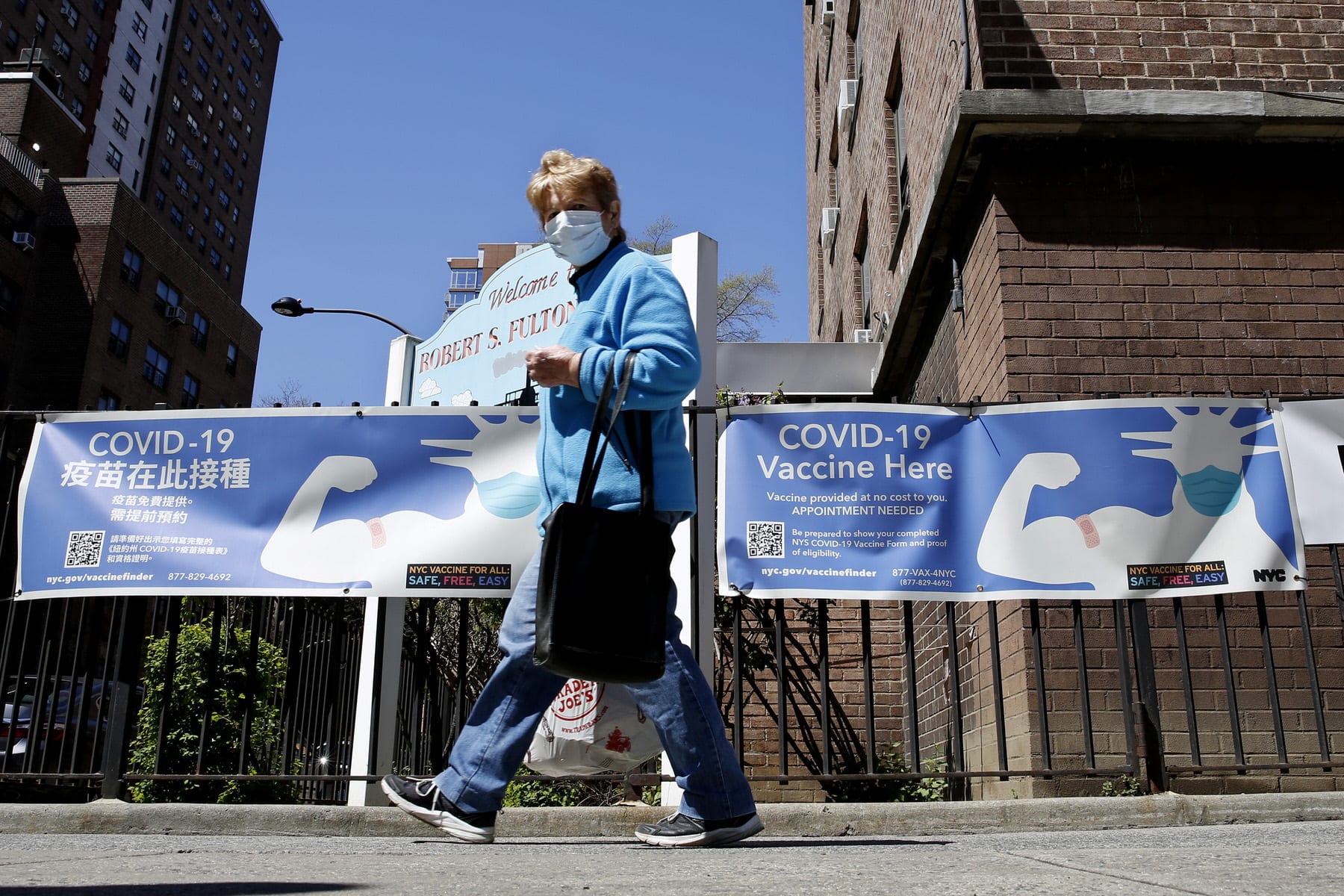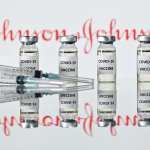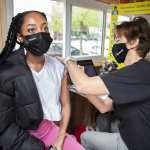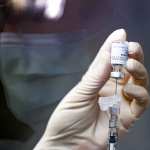The pause on Johnson & Johnson’s COVID vaccine should be lifted, the Centers for Disease Control and the U.S. Food and Drug Administration said Friday. The vaccine now comes with a warning about potential rare adverse side effects, for which the government will continue to monitor.
“The science supports this news, and I know this is welcome news for many,” CDC Director Rochelle Walensky told reporters Friday night.
The 10-day long freeze which began last week when federal health authorities revealed that six women had developed life-threatening complications — a rare combination of blood clots and low blood platelet levels — soon after taking the shot.
Government officials said the pause was to give the CDC and FDA time to collect more data about those complications and to ensure health care providers knew how to monitor and treat the condition, known as thrombosis with thrombocytopenia syndrome (TTS).
After extensive review, it appears that those complications, while severe, remain exceptionally rare. Members of the Advisory Committee on Immunization Practices, a panel that advises the CDC, argued that the benefits of the vaccine outweigh the potential risks at a meeting earlier on Friday.
The vaccine will now come with a warning label, acknowledging that there is a plausible causal relationship between the Johnson & Johnson shot and TTS.
Since the pause went into effect, the government has updated its count of side effects, identifying more cases. Out of the 6.8 million people immunized with the Johnson & Johnson shot, at least 15 developed TTS — all of whom were women. Three of the women died. Seven were still in the hospital, and five have already been discharged.
It’s not yet clear if men could also develop TTS after receiving the Johnson & Johnson vaccine, and the government is still monitoring a few more potential cases, said Dr. Tom Shimabukuro, a member of the CDC’s vaccine safety team, during the ACIP meeting. The government did not mention whether any cases have been recorded for non-binary people. In general, women are at greater risk for the blood clot more often recorded, a type of clot known as cerebral venous sinus thrombosis.
Of the data that has emerged, women in their 30s made up the plurality of TTS cases, and in general women younger than 50 appear to be of greatest concern. But the complications remained uncommon, even when looking at the group that appeared at highest risk. The current case data suggests that only 11.8 cases of TTS would appear per million women in their 30s who received the vaccine.
“For some women under the age of 50 there might be an increased risk of this rare TTS condition,” Walensky told reporters. “We have three safe and effective options for COVID-19 vaccines in this country and the J&J is a key vaccine offering.”
The CDC has also done outreach to medical providers, particularly obstetricians and gynecologists, to make sure health care professionals can be sure women who are at risk of complications are aware of the symptoms, and can self-monitor, Walensky said. “We need to do that and continue to do that,” she added.
Other risk factors are still not fully clear. Of the 15 cases, seven were women with obesity, two had hypertension, two were using oral hormonal birth control, and two had hypothyroidism — commonality that suggests those conditions may increase the risk of TTS.
Making the Johnson & Johnson shot available to all adults would save more lives than it would threaten, the CDC projects, at least based on current TTS frequency and the trends of coronavirus spread. The existing data suggests that if 9.8 million more such shots were delivered, 26 people would develop TTS — but as many as 1,435 lives could be saved and 2,236 intensive care admissions averted.
Still, those models depend on what vaccine uptake will look like once the Johnson & Johnson shot resumes, and there are multiple factors that could complicate that question. Even before last week’s pause, production problems and manufacturing delays meant the Johnson & Johnson vaccine represented a fraction of the more than 220 million shots administered in the United States.
The Johnson & Johnson shot had been touted as a potentially powerful tool for health equity. Unlike other available shots, made by Pfizer and Moderna, it only requires one injection and does not need freezer storage that is typically unavailable in TKTK. Losing the vaccine even temporarily created challenges for efforts to immunize people who were homebound, who didn’t have regular health care access or who were incarcerated.
Along with AstraZeneca’s two-shot regimen, the Johnson & Johnson vaccine — which is also cheaper to produce — had also been touted as potentially valuable in delivering shots to other, less wealthy countries.
But some experts worry that the recent pause could be a source of skepticism about the vaccine’s safety, both in the United States and abroad, though polling on this question has yielded mixed results so far.
“We have to do extraordinary outreach to clinicians, as we have been doing this past week,” Walensky said, adding, “and then we have to do extraordinary outreach to patients, to meet people where they are.”





